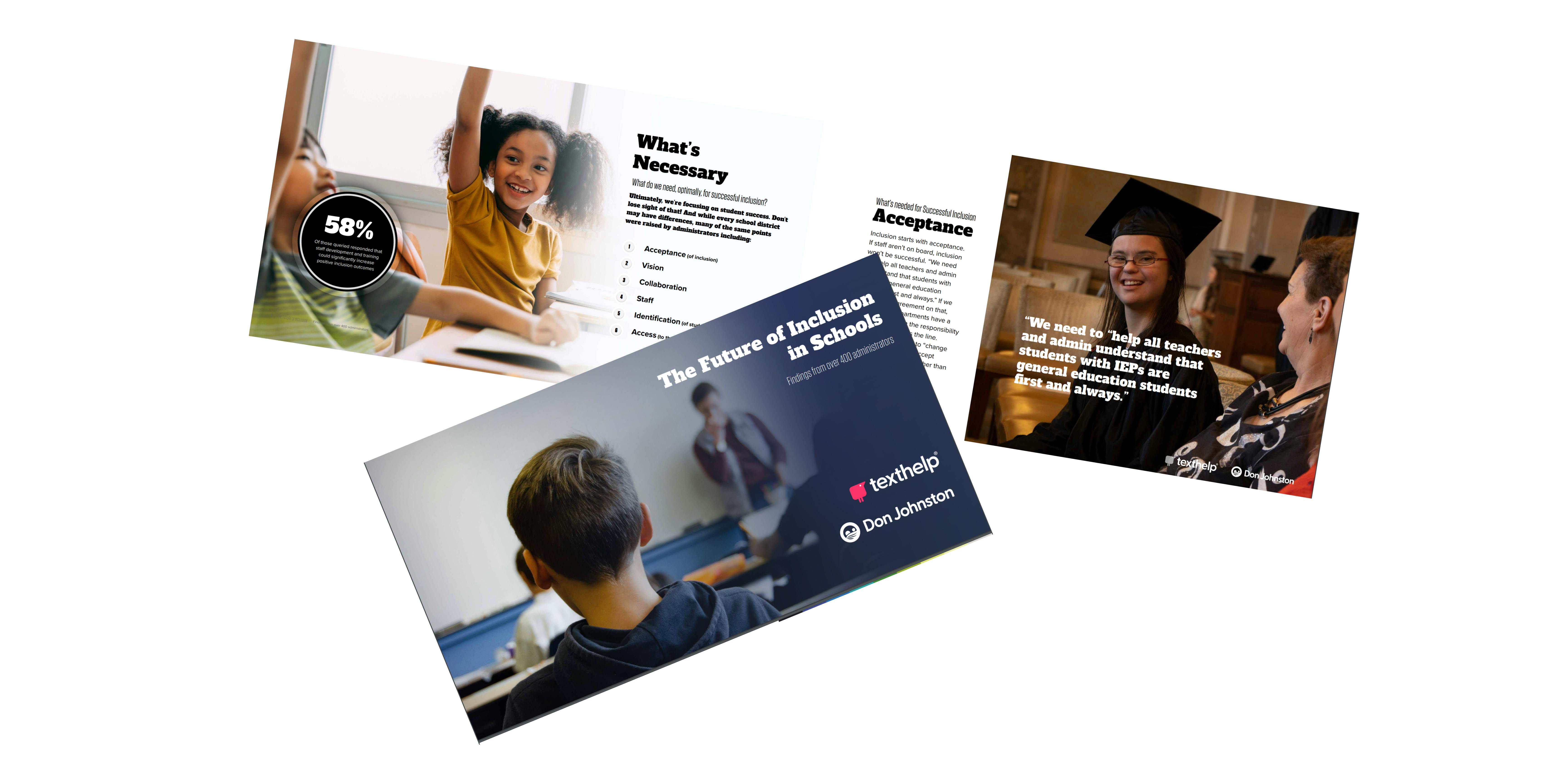The Future of Inclusion in Schools
Texthelp and Don Johnston surveyed over 400 administrators about their experiences with inclusion in schools. They shared top challenges, ways to improve and thoughts on the future of inclusion.
The future of inclusion aims to help students become successful in the least-restrictive environment while gaining full access to the general curriculum.
Fill out this brief form to discover:
- The current top challenges
- How to improve inclusion
- What’s necessary for successful inclusion
- How to make accommodation more impactful for inclusion
- Implementation
- Evaluation
- And how to use Esser Funding

The Focus on Inclusion: How did we get here?
The movement to inclusion ensures that students with IEPs receive a Free and Appropriate Education (FAPE) in the Least Restrictive Environment (LRE). Now, more than 60% of students with IEPs are included in general education classes at least 80% of the day.
But, physically including students is only the foundation. As one special ed director said, “just being at a place does not mean you are included.” True. The value comes from shifting focus to making students successful in their general education classes.
“The first step of inclusion was physical—integrating students into the general ed classroom. The second step is a sort of Inclusion 2.0 where our learning environments are set up to identify needs and give every student the right support to thrive.”
-Ben Johnston, Don Johnston Human Learning Tools
